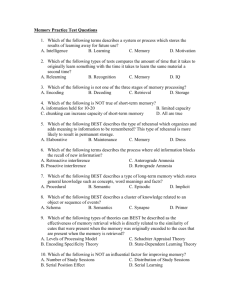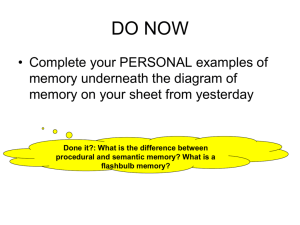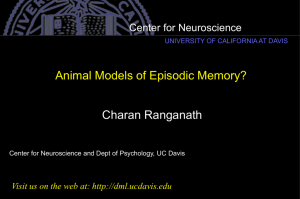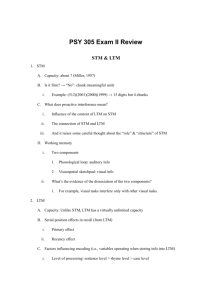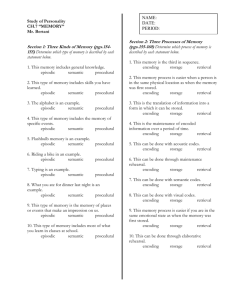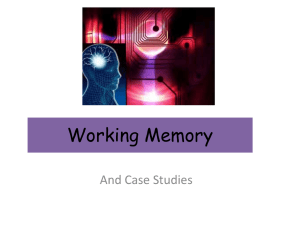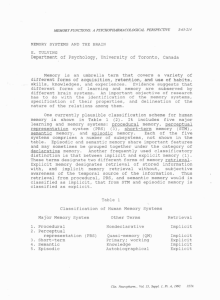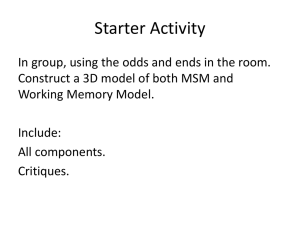Lesson 2 (Types of LTM)
advertisement
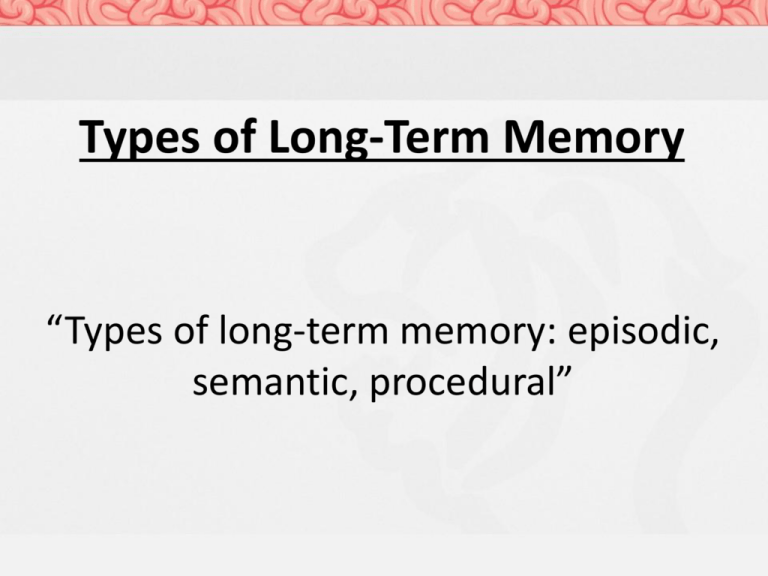
Types of Long-Term Memory “Types of long-term memory: episodic, semantic, procedural” Types of Long-Term Memory AO1 Recall the three types of long-term memory as described by Tulving (1985). AO2 Apply knowledge of the types of LTM to understand the case of Clive Wearing AO3 Evaluate episodic, semantic and procedural types of memories by using scientific evidence Reading Learning people’s names How to write a PEEL paragraph Your first day of school Writing Learning to swim How to make scrambled eggs Definition of ‘normative social influence’ Concept of ‘love’ Riding a bike Episodic Memory Create your own definition of ‘episodic memory’ using the following words: • Events • Experienced • Conscious thought • Declarative • Time-stamped Give example Episodic Memory Episodic memory is a part of the long-term memory responsible for storing information about events (i.e. episodes) that we have experienced in our lives. It involves conscious thought because you have to make a conscious effort to remember it and is declarative. These memories are ‘time-stamped’ and you remember when they happened. An example would be a memory of our 1st day at school. Semantic Memory Create your own definition of ‘semantic memory’ using the following words: • Information • World • Meaning • Knowledge • Conscious thought Example Semantic Memory Semantic memory is a part of the long-term memory responsible for storing information about the world. This includes knowledge about the meaning of words, as well as general knowledge. For example, London is the capital of England. It involves conscious thought and is mostly declarative. Procedural Memory Create your own definition of ‘procedural memory’ using the following words: • How to do things, i.e. memory of motor skills. • Unconscious • Automatic • Not declarative Give example Procedural Memory Procedural memory is a part of the long-term memory is responsible for knowing how to do things, i.e. memory of motor skills. It does not involve conscious (i.e. it’s unconscious automatic) thought and is not declarative. For example, procedural memory would involve knowledge of how to ride a bicycle. Compare and contrast Explain one difference between semantic memory and procedural memory (2 marks) What are the types of long term memory? Give an example of an episodic memory Explain what is meant by episodic memory. Explain what is meant by semantic memory. Give an example of procedural memory Clive Wearing Ext: Which type of long-term memory do you think Clive Wearing has lost? How do the following provide evidence different types of long term memory: How do the following provide evidence different types of long term memory: How do the following provide evidence different types of long term memory: How do the following provide evidence different types of long term memory: Clinical evidence Real life application Neuroimaging evidence Real life application (Point) Being able to identify different aspects of LTM allows psychologists to target certain kinds of memory in order to improve people’s lives. (Evidence) Belleville et al. (2006) demonstrated that episodic memories could be improved in older people who had mild cognitive impairment. (Elaboration) Trained participants performed better on an episodic memory test after training when compared to a control group. (Link) …. Neuroimaging evidence (Point) Evidence from brain scan studies suggests that different parts of the brain are associated with the storage of different types of memory. (Evidence) Tulving et al. (1994) asked participants to perform various memory tasks while their brains were scanned using a PET scanner. (Elaborate) What did Tulving find? (Link) How does Tulving’s findings support the point being made here? Clinical evidence (Point), (Evidence), (Elaboration) (Link) This evidence supports Tulving’s view that there are different memory stores in LTM because one store can be damaged and the others can be affected. This is clear evidence that not only are these types of memories different, but that they are stored in different parts of the brain.

